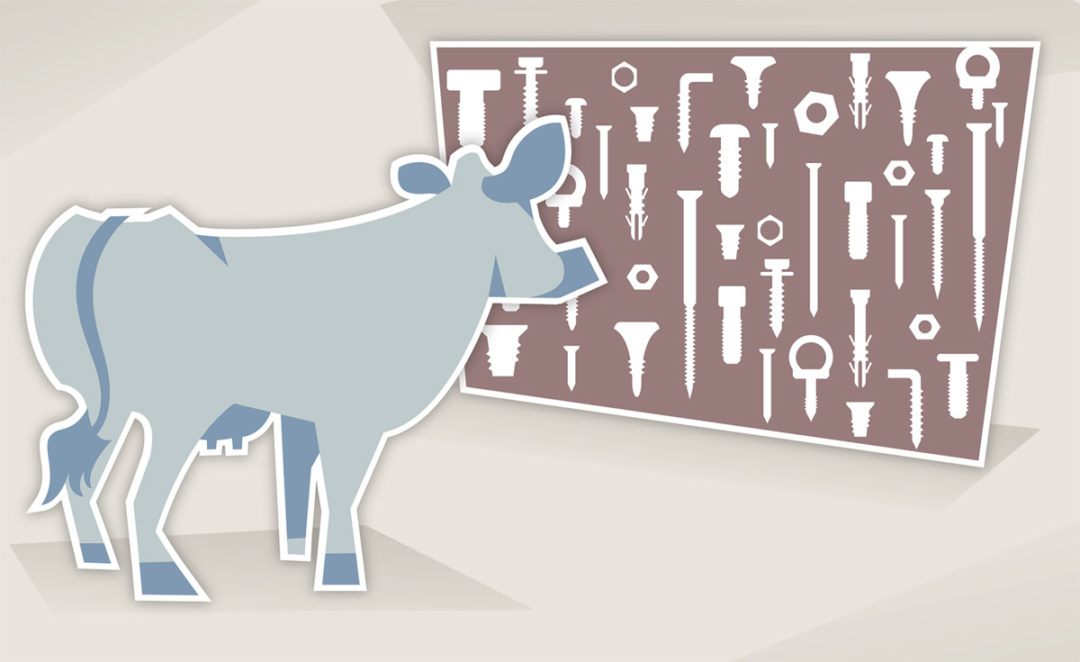In our household, we frequently take on building projects of all scales. Being less trustworthy with a power saw than my husband, I often find myself in the role of the go-getter when we run low on supplies. I recall my first trip to pick up more fasteners, in which I was instructed to get 60d nails. Little did I know how many different types of 60d nails there were, and I was in over my head, to say the least. This is surprisingly similar to wading through the myriad of sugars often included in dairy diets. Research has found that supplementing sugars in a dairy diet has the potential to increase milk yield, stabilize rumen pH and positively impact components.
In feed analysis, we often simply look at water-soluble carbohydrates (WSC) and ethanol-soluble carbohydrates (ESC) to evaluate sugar content. Within these categories there are multiple carbohydrates and types of sugars, just like there are many different types of nails or screws. ESC encompasses simple sugars such as fructose and glucose, sucrose and short-chain carbohydrates. WSC includes the aforementioned as well as lactose, long-chain fructans and readily fermented carbohydrates. The individual sugars mentioned within these classes can have very different results when included in rations, and being able to identify these individual sugars can help farms achieve their goals.
From a chemistry standpoint, sugars are typically classified into two major categories: monosaccharides or disaccharides. Monosaccharides are made up of one single sugar, while disaccharides are made up of two sugar units linked together. The structure of the sugar, and the location and type of bond between two sugar units, differentiates each type of sugar. Common monosaccharides include fructose and glucose, while sucrose and lactose are common disaccharides. Lactose comprises the majority of the sugar found in whey, while molasses is often higher in sucrose, glucose and fructose. The sugar profile of molasses can also vary depending on the source.
A recent study found that while the total sugar content of beet and cane molasses are similar at 62%, beet molasses has a higher concentration of sucrose compared to cane molasses (60% versus 49%). Cane molasses, in turn, had higher amounts of glucose and fructose. This study also highlighted the large amount of variability in total sugar content and individual sugars, further emphasizing the importance of understanding individual sugar profiles in feed.
As producers have relied more heavily on ensiled forage diets, sugar content of dairy rations has decreased. When looking at our laboratory database, typical fresh forage samples average 10% WSC. Dried hay exhibits similar levels of WSC; however, ensiled feeds have much lower sugar content. The average WSC levels for the common ensiled forages – corn silage, haylage and small grains – are 3.8%, 5.3% and 5.1%, respectively. This resulting gap may suggest that supplementation can prove beneficial.
Similar to how the structure of a fastener determines the best application for its use, the varying chemical structures of sugars also play a large role in its optimal utilization. Studies evaluating the addition of sucrose to lactating dairy cows have shown increased neutral detergent fiber digestibility (NDFD) when supplemented at 5% to 7.5% of the ration. They have also shown potential benefit to dry matter intake (DMI) and milkfat production.
A 2017 meta-analysis found that 3.5% fat-corrected milk yield was maximized when sucrose was included at approximately 4% of the ration, with total optimal sugar content being at 6.75% sugar. Lactose supplementation in some circumstances has also been shown to increase DMI; however, component response has been more variable, with many studies showing little to no response to supplementation. Interestingly, when rumen fermentation products were studied, lactose supplementation often exhibited a significant increase in butyrate production, which is different from the results reported from in vitro studies.
The chemical structure also impacts how these sugars are utilized in the rumen and may help explain some of the differences in production response. Research has reported huge ranges in the rate of sugar hydrolysis and fermentation. Fermentation rate was estimated at 300% to 700% depending on the sugar source. A 2013 study found in vitro gas production at three hours of fermentation was much higher for glucose, fructose and sucrose when compared to xylose, galactose, arabinose, mannitol and lactose, highlighting the previously mentioned differences in fermentation rates.
Although knowing ESC and WSC levels can be a good start to evaluating total dietary sugar levels, digging deeper into the individual sugars will help in fine-tuning rations. When looking to supplement sugar in a dairy ration, reading through the extensive literature and understanding the differences in individual sugars can seem as overwhelming as trying to pick the correct screw or nail in the fastener aisle. However, testing for individual sugars can provide the guidance needed to attain the desired outcome.








